Content
Moon landing
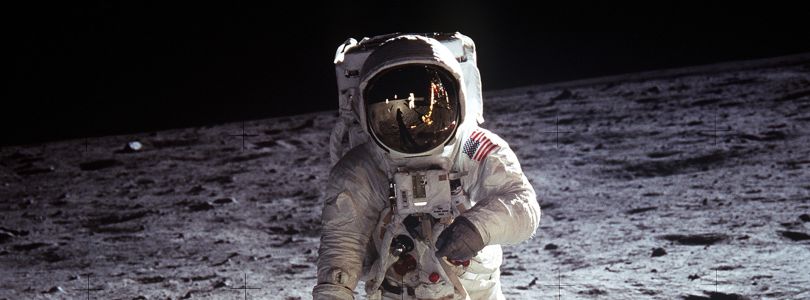
One of the most famous images of the 20th century: Astronaut Buzz Aldrin on the Moon, 21 July 1969
The patents that brought Man to the Moon
It was one of the greatest events in the history of mankind: More than 50 years ago the first astronaut walked the moon. A small step in that very moment for Neil Armstrong, but a giant leap for mankind. Landing on another celestial body for the first time was an adventure that eclipsed even the greatest voyages of discovery, such as the first circumnavigation of the world.
NASA's first lunar landing as part of the Apollo programme was a highly complex mission that required a number of new technical developments. We would like to recall some patented inventions that made the moon landing of Apollo 11 possible.
Pioneers in Massachusetts and Reinickendorf
A rocket was recognised relatively early on as the preferred means of transport for a manned space flight. Already in 1913 the American rocket pioneer Robert Goddard (1882-1945) applied for a patent for a "Rocket Apparatus" ( ![]() US1102653A). Misjudged during his lifetime and dismissed as a fantasist, he succeeded in launching the first rocket with liquid-propelled engine in 1926 in Massachusetts. He applied for many more patents, the last one being a launching apparatus for rockets (
US1102653A). Misjudged during his lifetime and dismissed as a fantasist, he succeeded in launching the first rocket with liquid-propelled engine in 1926 in Massachusetts. He applied for many more patents, the last one being a launching apparatus for rockets ( ![]() US2307125A) in 1940.
US2307125A) in 1940.
Another root of the Apollo program lay in the "Verein für Raumschifffahrt": Rocket pioneers such as Wernher von Braun and Hermann Oberth experimented with liquid-fuelled rockets in Berlin-Reinickendorf in 1928. In 1929 Oberth filed one of the earliest patent applications, namely " Vorrichtung zum Antrieb von Fahrzeugen durch den Rückstoß ausströmender Verbrennungsgase (Device for driving vehicles by the recoil of escaping combustion gases)" ( ![]() DE570511A).
DE570511A).
The bloody roots of the Saturn rocket
Wernher von Braun later became the most important manager of early space travel in the West. For his projects he literally went over dead bodies and built rockets first for the Nazis, then for the Americans.
His "Aggregat 4" was the first rocket to reach space in 1944. It became known under its propaganda name "Vergeltungswaffe (Retaliation Weapon) 2" (V2). It claimed thousands of lives - both during its manufacture in murderous forced labor in the Mittelbau-Dora concentration camp and during its missions as the first ballistic ground-to-ground missile in attacks on the inner cities of London or Antwerp.
After the Americans had "taken over" Braun and other German rocket pioneers after the Second World War, he developed the first large rockets, which were also powered by liquid fuel. Brauns rocket, patented under US2967393A, served as the starting point for the development of the mighty Saturn V rocket, which brought Armstrong and his colleagues to the moon.
Apollo's women - Heroines in the Background
The name of the first man on the moon, Neil Armstrong, is still known today. The second man on the moon, Edwin "Buzz" Aldrin, is also well known to this day; even the name of the third crew member Michael Collins, who remained in orbit during the moon landing in the spaceship, is still known by many. But only a few knew until recently that some women had also played a decisive role in that millennium project of a lunar landing. In recent years, the names of some of these heroines have become known to a wider public. We present some of them in our small series Apollo´s women.
Engines for 100-meter rockets
In order to send a manned landing apparatus to the moon, a very high propulsive power of the rocket is necessary. This problem was solved on the one hand by the fact that the moon rocket had several propulsion stages (for the 111 meter high Saturn V there were three). ![]() US3077073A describes a newly developed engine that propels rockets by burning hydrogen and oxygen.
US3077073A describes a newly developed engine that propels rockets by burning hydrogen and oxygen.
In addition to the construction of a moon rocket a capsule had to be developed, which was to be suitable to transport people as safely as possible. ![]() US3093346A shows a space capsule, which was arranged at the tip of the rocket. This space capsule was equipped with an emergency retrieval system in case of failure, as described in
US3093346A shows a space capsule, which was arranged at the tip of the rocket. This space capsule was equipped with an emergency retrieval system in case of failure, as described in ![]() US3001739A . The space capsule was brought into orbit by several propulsion episodes of the three rocket stages and then on a trajectory in the direction of the moon.
US3001739A . The space capsule was brought into orbit by several propulsion episodes of the three rocket stages and then on a trajectory in the direction of the moon.
Navigation for delicate manoeuvres
The flight to the moon and the uncoupling and coupling of two spacecrafts in the moon's orbit required a sophisticated navigation system. ![]() US3104545A (1,68 MB) shows a gyroscope-based guidance and navigation system ("Guidance system" by Charles Draper).
US3104545A (1,68 MB) shows a gyroscope-based guidance and navigation system ("Guidance system" by Charles Draper). ![]() US3415126A (0,97 MB) describes a guidance and navigation system for the precise alignment of a spacecraft ("Azimuth laying system"), which is proposed for use in the rockets of the Saturn class.
US3415126A (0,97 MB) describes a guidance and navigation system for the precise alignment of a spacecraft ("Azimuth laying system"), which is proposed for use in the rockets of the Saturn class.
The exact alignment of a spacecraft is particularly necessary for a docking manoeuvre between two spacecraft, as was done during the Apollo mission. The Apollo capsule was rotating to stabilize its flight on the way to the moon and back to Earth. The NASA patent ![]() US3752993A (1,43 MB) shows a flight attitude sensor for a rotating spacecraft that enables a horizon scan.
US3752993A (1,43 MB) shows a flight attitude sensor for a rotating spacecraft that enables a horizon scan.
Gentle landing decisive
For the actual landing on the moon a special lunar module had to be developed, as shown in ![]() US219690S for example. This manned lunar module ("Eagle") was then decoupled from the space capsule ("Columbia") in a lunar orbit and steered to the lunar surface. Before the first moon landing the consistency of the lunar surface was not known very exactly. Therefore special attention was paid to the construction of the landing supports and their underlay.
US219690S for example. This manned lunar module ("Eagle") was then decoupled from the space capsule ("Columbia") in a lunar orbit and steered to the lunar surface. Before the first moon landing the consistency of the lunar surface was not known very exactly. Therefore special attention was paid to the construction of the landing supports and their underlay. ![]() US3181821A and
US3181821A and ![]() US3175789A describe landing buffers which are suitable for landing on the moon.
US3175789A describe landing buffers which are suitable for landing on the moon.
The surface of the moon is a very hostile place for humans. Therefore special suits had to be developed, which make a short stay at the moon possible. ![]() US3463150A (1,78 MB) describes a life-support system for a moon suit. Such suits also had to guarantee a certain mobility so that the astronauts could work on the moon.
US3463150A (1,78 MB) describes a life-support system for a moon suit. Such suits also had to guarantee a certain mobility so that the astronauts could work on the moon. ![]() US3534406A shows flexible movable joints for a lunar suit. Also
US3534406A shows flexible movable joints for a lunar suit. Also ![]() US3751727A (1,4 MB) sketches a lunar space suit.
US3751727A (1,4 MB) sketches a lunar space suit.
Victory in the "space race"
With the first moon landing, the USA won the "space race", the race against the Soviet Union for the first man on the moon. In 1957 the Russians had shocked the Americans with "Sputnik", the first satellite, in 1959 with the lunar impact of "Lunik-2" and in 1961 with the first man in space, Juri Gagarin. As a result, the USA multiplied its efforts, employed at times more than 400,000 people in the Apollo program and finally won the prestigious race to the moon. Possibly the Soviets would not have lost their lead if the "mastermind" of their space program, the ingenious designer Sergej Koroljow, had not died unexpectedly in 1966.
Home safe
After the Apollo astronauts had left the lunar surface again, they were brought back to earth with the space capsule. Another critical manoeuvre took place: the immersion of the space capsule into the Earth's atmosphere. Since the space capsule still had a high velocity, it was heated up to very high temperatures by air friction. Therefore the space capsule had to be equipped with a heat shield. ![]() US3130940A shows a corresponding heat shield, which enables a safe immersion of the space capsule into the earth's atmosphere (provided that the immersion angle and further factors are considered).
US3130940A shows a corresponding heat shield, which enables a safe immersion of the space capsule into the earth's atmosphere (provided that the immersion angle and further factors are considered).
Finally, the Apollo space capsules landed in the sea as part of a controlled descent. ![]() US3484826A describes a soft landing system for a spacecraft.
US3484826A describes a soft landing system for a spacecraft.
After the sensational first moon landing and five further missions, which brought a total of ten (male) astronauts to Earth's satellite, NASA ended its Apollo programme in 1972 in favour of other projects such as Skylab and the Space Shuttle missions. At that time, nobody would have expected that there would be no more moon landings for more than half a century.
Meanwhile, NASA has announced that it will return to the moon soon. And then finally a woman should be there.
Pictures: NASA (public domain), DEPATISnet, NASA (public domain), DEPATISnet, NASA (public domain)
Last updated: 10 December 2025

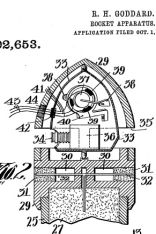
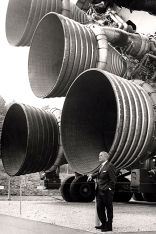
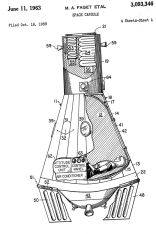
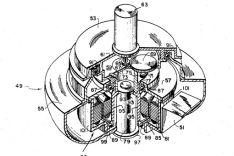
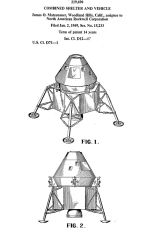
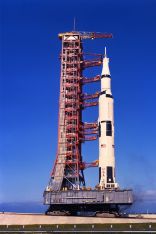
Not only protecting innovations
Social Media